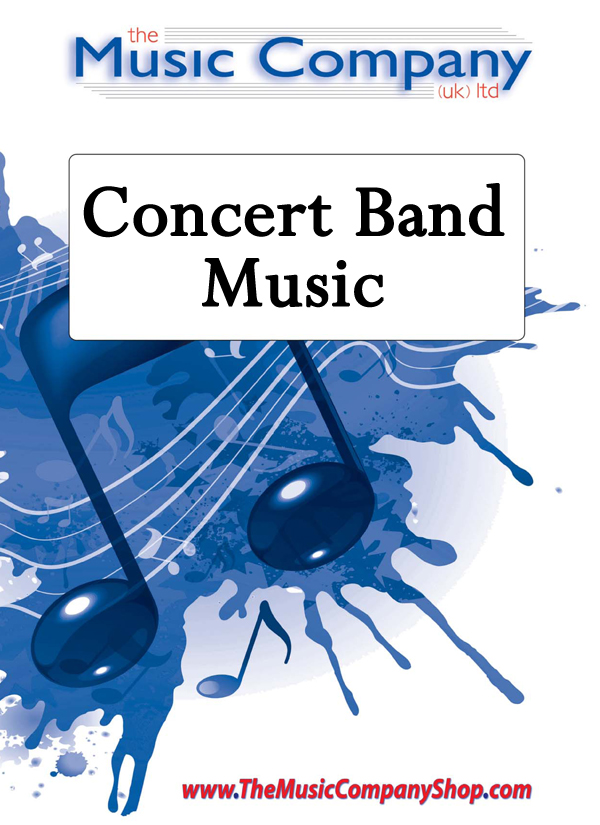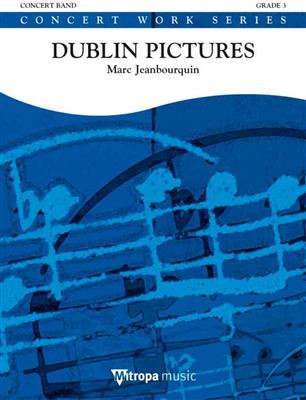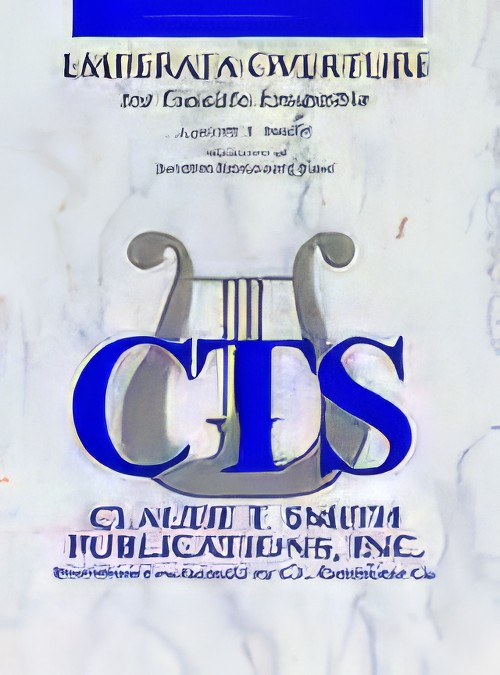Results
-
£54.95
Pound the Streets - Paul Lovatt-Cooper
A fast pounding rock number commissioned for the National Youth Brass Band of Scotland by the Scottish Brass Band Association for the Tartan Heart Festival 2010. Circa 3'30".
Estimated dispatch 3-5 days
-
 £206.99
£206.99Omaggio - Philip Sparke
Omaggio was commissioned by Steven Mead in celebration of his 60th birthday and in memory of his father, Rex. He gave the premiere of the brass band version in Rome in March 2022, accompanied by the Italian Brass Band conducted by Filippo Cangiamilla. The concert band premiere took place on 6th July that year as part of the 2022 Spanish International Tuba Euphonium Conference, accompanied by the Banda municipal de msica de Mlaga. The concerto is set in 3 continuous movements, which are united by a recurring syncopated interval of a fifth. The first movement, FANTASIA, opens with this motive accompanying an extended monologue for the soloist. This is followed by a lengthy bridge passage by the band (piano), which is eventually joined by the soloist, who guides the music back to the opening soliloquy, leading to an energetic central section. This develops until the opening material again returns to introduce the second movement, BALLAD, which revolves around an expressive melody for the soloist, interspersed by accompanied cadenzas. The third movement, THE KING TRIUMPHANT, pays homage to Steven's late father, Rex, and its title alludes both to Rex's name ('Rex' being Latin for 'king') as well as his love of Eric Ball's Salvationist masterpiece, The Kingdom Triumphant. The finale is an energetic tour-de-force featuring an acrobatic 6/8 melody, which is interrupted twice by the magnificent hymn tune, Helmsley, which Ball uses so effectively in The Kingdom Triumphant. A galloping coda brings the work to a close.
Estimated dispatch 7-14 working days
-
 £127.30
£127.30Urban Song - John Philip Hannevik
Storbystev has a catchy tune, and incorporates a mix of funk-, samba- and rock rythms. The alto saxophone and trumpet are featured as soloists, but the piece also show-cases the tuba- and percussion sections.The piece works especially well as a concert opener (or the first piece after an interval). One can start the piece with only the triangle-player on stage, and the rest of the band can take their places and join in when ready.Storbystev was written for the Oslofjord Brass Band and their participation in the Siddis Brass entertainment contest in Stavanger in 1996. The band won the first section that year.Published with support from Norwegian Society of Composers.
Estimated dispatch 7-14 working days
-
£57.50
Vanguard - James Curnow
This contemporary-sounding work makes a fine concert opener or festival selection! Your band will demonstrate a wide variety of styles in less than three minutes. There is plenty of enjoyable "flight time" for the upper woodwinds, exciting passages for the brass, and a fetching liberally-cued brass ensemble section.
Estimated dispatch 7-14 working days
-
 £55.00
£55.00The Declaration of Arbroath - Andrew Duncan
Programme notes from the composer, Andrew Duncan:Originally written for The West Lothian Schools' Annual Concert 2006 and scored for Concert Band, Brass Band, Highland Bagpipes, Children's Choir and Narrator. This version has been rescored for Concert Band with optional parts for Highland Bagpipes and Narrator. The piece celebrates the internationally renowned Declaration of Arbroath. The music begins in the uncertain times of Scotland's early 14th century, following the Battle of Banockburn and the death of William Wallace. The narrator describes this scene and explains the origins of the Declaration. The music builds to a climax, but once again gives way to uncertainty, allowing the narrator to explain further the history surrounding the Declaration. A group of Scottish Nobles wrote the Declaration which was an appeal to the Pope to recognize Scotland's independence. The piece then reflects a positive outcome following the Pope's support of the Declaration. Further information is provided by the narrator which draws to a rousing build to express the emotive inspiration behind this composition.The original scoring (to include Concert Band, Brass Band, Highland Bagpipes, Choir and Narrator) is also available by request.
In stock: Estimated delivery 1-3 days
-
 £115.60
£115.60Han Mass og han Lass
Han Mass og han Lass is a folk tune from Jlster in Norway. The arranger imagine to men sitting telling stories to each other. As the time goes, both exaggeretate more and more...... This arrangement was originally written for brass band, as a commission from the Youth Brass band of the Norwegian county of Sogn og Fjordane.
Estimated dispatch 7-14 working days
-
 £127.30
£127.30Lei, milde ljos - Charles Henry Purday
Lead, Kindly Light is composed by the English composer Charles Henry Purday (1799-1885).This arrangement was originally written for Brass Band to Norwegian band Hjrungavg Brass.Purday was appointed conductor of psalmody at CrownCourt Scots Church in Covent Garden, London, in the 1840's, during the ministry of Dr. John Cumming. Dr. Cumming's church was so popular that it was said traffic could not move in Bow Street and Drury Lane for the throng of carriages making their wayto services. Purday was a fine vocalist and had sung at the coronation of Queen Victoria. He became a music publisher, and was a pioneer in the movement for copyright law reform.
Estimated dispatch 7-14 working days
-
 £141.99
£141.99Pulcinella - Philip Sparke
Pulcinella was commissioned by the Taiwanese euphonium player Tzu-Hsiang Lin. Lin is a renowned soloist and teacher and a Besson Euphonium Artist. He teaches euphonium at Taipei National University of the Arts, National Taiwan University of Arts, Shih Chien University and National Kaohsiung Normal University. Lin gave the premiere of Pulcinella in both its concert band and brass band versions in January 2021. Pulcinella continues Sparke's series of euphonium solos named after characters of the Italian commedia dell'arte and opens with a long and expressive minor melody for the soloist over a brooding accompaniment. This is taken up briefly by the full band and is extended by the soloist after a change of key. A cadenza, accompanied by fragments of the main melody leads to a complete change of mood, tempo and tonality, introducing a Vivo section starting with a perky syncopated tune for the soloist. The band then uses elements of this new tune to introduce a change of key, where the soloist introduces a more lyrical second subject over a pulsing accompaniment. The band then takes this up and changes key to reintroduce the original Vivo melody, which leads to a short and acrobatic coda to bring the work to a spectacular close.
Estimated dispatch 7-14 working days
-
 £134.99
£134.99Dublin Pictures - Marc Jeanbourquin
Ireland is a multi-faceted country that has developed a popular and distinctive musical culture. The first movement of Dublin Pictures reflects Irish festivals where there is dancing and traditional beer flowing. More tranquil in its feel, the second movement illustrates the landscape that can be seen from the Ha'penny Bridge, a bridge that crosses the River Liffey in Dublin. This movement highlights the wide range of the orchestra's sound colours as the musicians' voices combine with the wind and percussion to accompany the soloist. The lively and joyful rhythms of the last movement take the listener to Temple Bar, the famous tourist quarter of the city, well knownfor its vibrant nightlife. The music's energy and virtuosic motifs are in contrast to the previous movement and provide a spirited and festive finale.Marc Jeanbourquin wrote this piece in three movements for Azimuts Brass in 2011. He then arranged it for Concert, Fanfare or Brass Band
Estimated dispatch 7-14 working days
-
 £85.00
£85.00Emperata Overture (Flexible Ensemble - Score and Parts) - Smith, Claude T. - Earp, Joseph Benjamin
Emperata Overture is a wind band classic for concert and festival alike. The original publication of this work established Claude T. Smith's use of the 7/8-time meter as his signature rhythmic device for instrumental ensembles. This flexible arrangement allows ensembles to perform the work with as few as fourteen musicians providing accessibility and flexibility for numerous instrumentation needs, while still allowing a full ensemble sound.*The posted recording is based on the full band scoring but aligns with the suggested preferences for either woodwinds/strings or brass suggested in the score.
Estimated dispatch 7-14 working days
